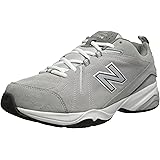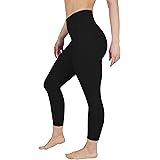Have you ever wished you could enjoy a refreshing, fizzy drink that’s not only delicious but also packed with health benefits? As the video above demonstrates, crafting your own DIY probiotic soda is surprisingly simple and doesn’t require any expensive equipment. It all starts with a magical concoction known as a ginger bug.
This post dives deeper into the world of homemade fermentation, expanding on the video’s essential steps and providing you with everything you need to know to create your own bubbly, gut-friendly beverages right in your kitchen. Imagine sipping on a vibrant, naturally carbonated drink, knowing exactly what’s in it!
What Exactly is a Ginger Bug, Anyway?
The core of any great homemade probiotic soda lies in its starter culture, and for our purposes, that’s the ginger bug. The video mentions it’s “basically like sourdough starter,” and that’s an excellent comparison. Both are living cultures, teeming with beneficial wild yeasts and bacteria, which are essential for fermentation. But instead of flour and water, a ginger bug relies on a simple mix of organic ginger, sugar, and water.
The magic happens as these microscopic organisms, naturally present on the ginger’s skin and in the air, begin to feast on the sugar. This metabolic process, known as fermentation, produces carbon dioxide (which creates the fizz) and a small amount of alcohol (usually negligible, especially for short fermentation times). The result is a vibrant, active starter culture ready to transform plain juice into a delightful, probiotic-rich drink.
It’s important to use organic ginger because conventional ginger might be treated with anti-fungal agents or pesticides that could inhibit the growth of the beneficial microorganisms we want to cultivate. Furthermore, using unchlorinated water is also crucial, as chlorine can kill these sensitive microbial communities.
Building Your Bubbly Ginger Bug Starter
Creating your own ginger bug is a rewarding process, and the video succinctly covers the basics. Let’s break down the steps and add some extra insights to ensure your success:
Day 1: The Foundation
- Ingredients: You’ll need about 2 tablespoons of freshly grated organic ginger, 2 tablespoons of white sugar, and 1 cup of filtered or unchlorinated water.
- Combine: Mix these ingredients in a clean glass jar (a pint-sized mason jar works perfectly).
- Cover: Loosely cover the jar with a cloth or coffee filter secured with a rubber band. This allows air circulation while keeping out unwanted guests.
- Placement: Leave your jar at room temperature, ideally between 68-75°F (20-24°C), away from direct sunlight.
Daily Feeding Ritual: Nurturing Your Culture
Just like any pet, your ginger bug needs to be fed! The video shows progression from day two to day five, and this daily feeding is key. Each day, for about five to seven days, you will add:
- 1 teaspoon of grated organic ginger
- 1 teaspoon of white sugar
Gently stir the mixture after each feeding. You’ll observe changes over the week. By day two, you might notice subtle cloudiness. By day five, as shown in the video, you should start to see small bubbles forming on the surface and along the sides of the jar, particularly after stirring. This indicates that the wild yeast and bacteria are thriving and actively fermenting the sugar.
When Is Your Ginger Bug Ready?
After about a week of consistent feeding, your ginger bug should be lively and bubbly. You’ll see a noticeable amount of foam and active fizz when you stir it. At this point, it’s potent enough to be used to make DIY probiotic soda. Once active, you can either use it immediately or store it in the refrigerator. If refrigerated, remember to feed it once a week with the same amounts of ginger and sugar to keep it robust. Imagine having a perpetually ready source of natural fermentation in your fridge!
The Magic of Fermentation: Why It Matters for Your Gut
Why go through the effort of making homemade soda? Beyond the delightful taste and customizability, the primary draw is the probiotic content. Probiotics are live microorganisms that, when consumed in adequate amounts, confer a health benefit on the host. These beneficial bacteria are crucial for a healthy gut microbiome, which plays a role in digestion, nutrient absorption, and even immune function.
Store-bought sodas, even many “natural” ones, often lack these beneficial microbes and are typically loaded with artificial ingredients or excessive amounts of refined sugar. By making your own natural probiotic drinks with a ginger bug, you’re creating a beverage that:
- Supports Gut Health: Introduces diverse strains of beneficial bacteria into your digestive system.
- Provides Natural Fizz: Achieves carbonation through natural processes, without pressurized CO2.
- Offers Custom Flavors: You control the ingredients, allowing for endless flavor combinations.
- Is Cost-Effective: Making your own can be significantly cheaper than buying specialty probiotic drinks.
This process of wild fermentation is a time-honored tradition that connects us to natural food preparation methods, harnessing nature’s own tiny workers to create something wonderful.
Crafting Your DIY Probiotic Soda: From Bug to Bottle
Once your ginger bug is active and ready, the fun of making fermented drinks begins! The video provides a clear overview, and here we’ll add some crucial details for successful bottling.
Choosing Your Juice: The Sweet Spot
The video correctly emphasizes the importance of using a juice that “has some sugar in it.” This is critical because the sugar provides the food source for the ginger bug’s microbes during the second fermentation. Without adequate sugar, your soda won’t get fizzy.
Experiment with different fruit juices! Apple, grape, cranberry, orange, or a blend can all work beautifully. Avoid juices with artificial sweeteners or preservatives, as these can hinder fermentation. Freshly squeezed juice is ideal, but good quality store-bought juice works just fine. Imagine a sparkling elderberry and ginger soda—the possibilities are truly endless!
Sanitization is Key for Success
Before bottling, the video instructs you to “sanitize swing-top bottles.” This step cannot be overstated. Just like brewing beer or kombucha, ensuring your bottles are clean and sanitized prevents the growth of undesirable bacteria or mold that could spoil your soda or make it unsafe to drink. Sterilization means eliminating all microbes, while sanitization significantly reduces them.
You can sanitize glass bottles by:
- Washing them thoroughly with hot soapy water, rinsing well, and then placing them in an oven at 275°F (135°C) for 10-15 minutes.
- Running them through a hot sanitize cycle in your dishwasher.
- Using a food-grade sanitizing solution (like Star San) following the manufacturer’s instructions.
Ensure bottles are completely dry before use to avoid diluting your juice.
The Second Fermentation: Bottling for Fizz
This is where your plain juice transforms into a sparkling ginger probiotic soda. Here are the steps, expanded from the video’s instructions:
- Strain the Ginger Bug: Pour your active ginger bug through a fine-mesh strainer into a separate bowl or measuring cup. This removes the spent ginger pieces. The liquid (the “bug”) is what you’ll use. You can discard the strained ginger or compost it.
- Measure the Bug: Add “an ounce or two” (approximately 30-60ml) of the strained ginger bug liquid into each sanitized swing-top bottle. The amount can vary based on the bottle size and desired fizziness. A little more can lead to faster fermentation, a little less to slower.
- Top with Juice: Carefully pour your chosen fruit juice into each bottle, leaving about an inch (2.5 cm) of headspace from the top. This space is crucial for the carbon dioxide that will build up during fermentation.
- Seal and Ferment: Securely close the swing-top bottles. Leave them at room temperature, again between 68-75°F (20-24°C), for “two to three days.”
Monitoring and “Burping” Your Bottles
The video mentions, “If you start to see bubbles, you’ll know it’s working.” This is your visual cue! You should see small bubbles forming and rising in the juice. However, as carbon dioxide builds up, pressure can increase significantly, especially in sealed swing-top bottles. To prevent potential “bottle bombs” (bottles exploding due to excessive pressure), it’s a good practice to “burp” your bottles once a day.
To burp, simply unclip the swing top and allow the gas to hiss out, then reseal it immediately. This releases excess pressure while maintaining carbonation. As an alternative, you can also use plastic soda bottles for your first few batches, as they will bulge noticeably when highly carbonated, indicating when they need to be refrigerated or burped.
Refrigeration and Enjoyment
Once your soda has reached your desired level of fizziness (usually within those two to three days, but it can be less or more depending on room temperature and sugar content), it’s time to “refrigerate until ready to drink.” Refrigeration significantly slows down the fermentation process, preventing further carbonation and preserving the flavor. Serve cold and “pop them open and enjoy!”
Beyond the Basics: Tips for Success and Troubleshooting
Even with simple DIY probiotic soda, questions can arise. Here are some extra insights to help you on your fermentation journey:
- Too Fizzy? If your soda is *too* fizzy, next time try reducing the fermentation time at room temperature or using a little less ginger bug.
- Not Fizzy Enough? If it’s flat, your ginger bug might not be active enough (feed it for another day or two), or the room temperature might be too cold. Also, ensure your juice has sufficient sugar.
- Mold? If you ever see fuzzy, colored mold (usually green, black, or white) on the surface of your ginger bug or soda, it’s best to discard the batch and start fresh. This usually indicates inadequate sanitation or exposure to undesirable microbes.
- Flavor Variations: Don’t limit yourself to just juice! You can add small amounts of fresh herbs (like mint or basil), spices (cinnamon stick, star anise), or fruit slices to the bottle during the second fermentation for extra flavor. Just remember they also contribute sugar.
- Continuous Supply: Always keep some ginger bug aside in the fridge as your “mother” culture. This way, you can continuously make soda and don’t have to start from scratch every time.
Embracing the world of homemade fermented drinks like DIY probiotic soda is a fantastic way to introduce more beneficial bacteria into your diet and enjoy delicious, natural beverages. It’s an accessible step into the broader world of healthy living and natural food preparation, proving that you don’t need a fancy machine to create something truly special and healthful.











